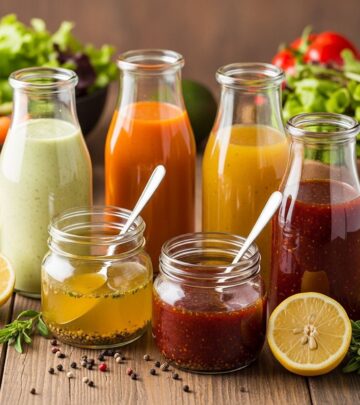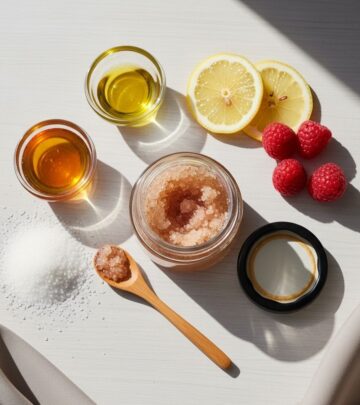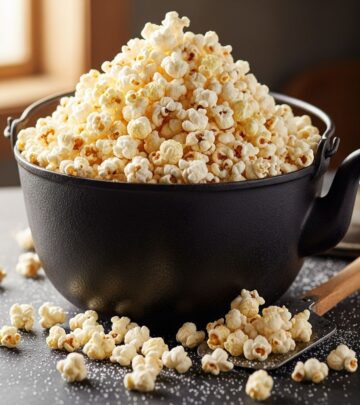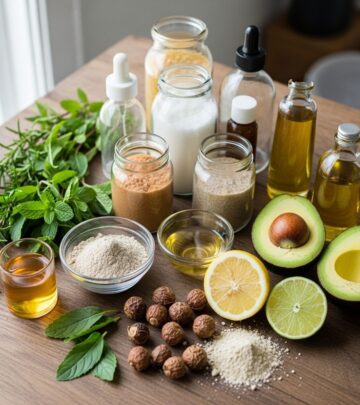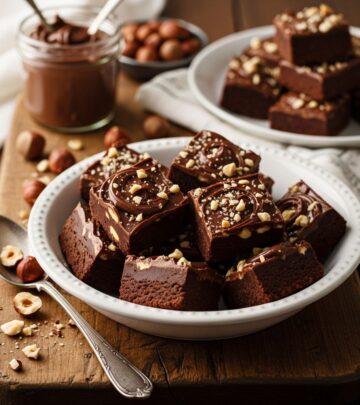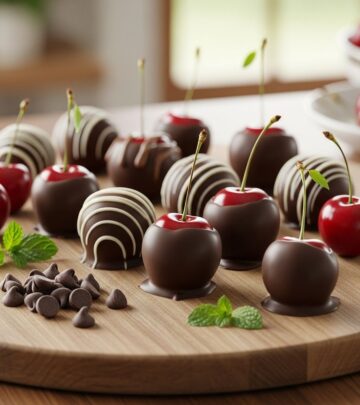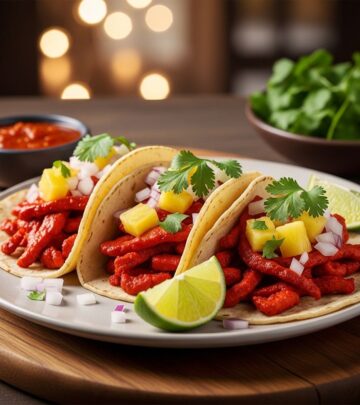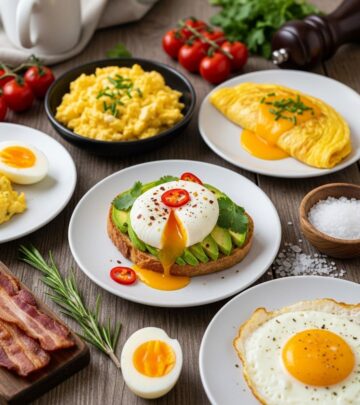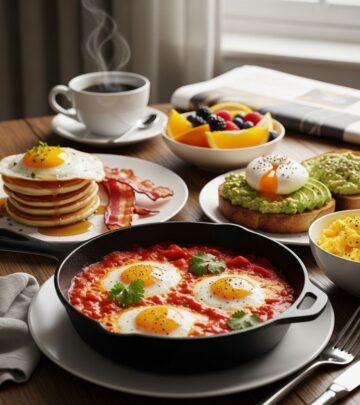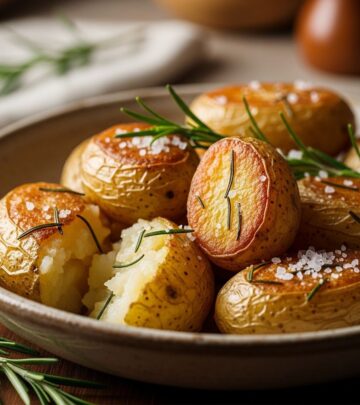Types Of Pasta: 27 Shapes And Perfect Pairings
Discover unique shapes and perfect pairings to elevate your next Italian dining experience.
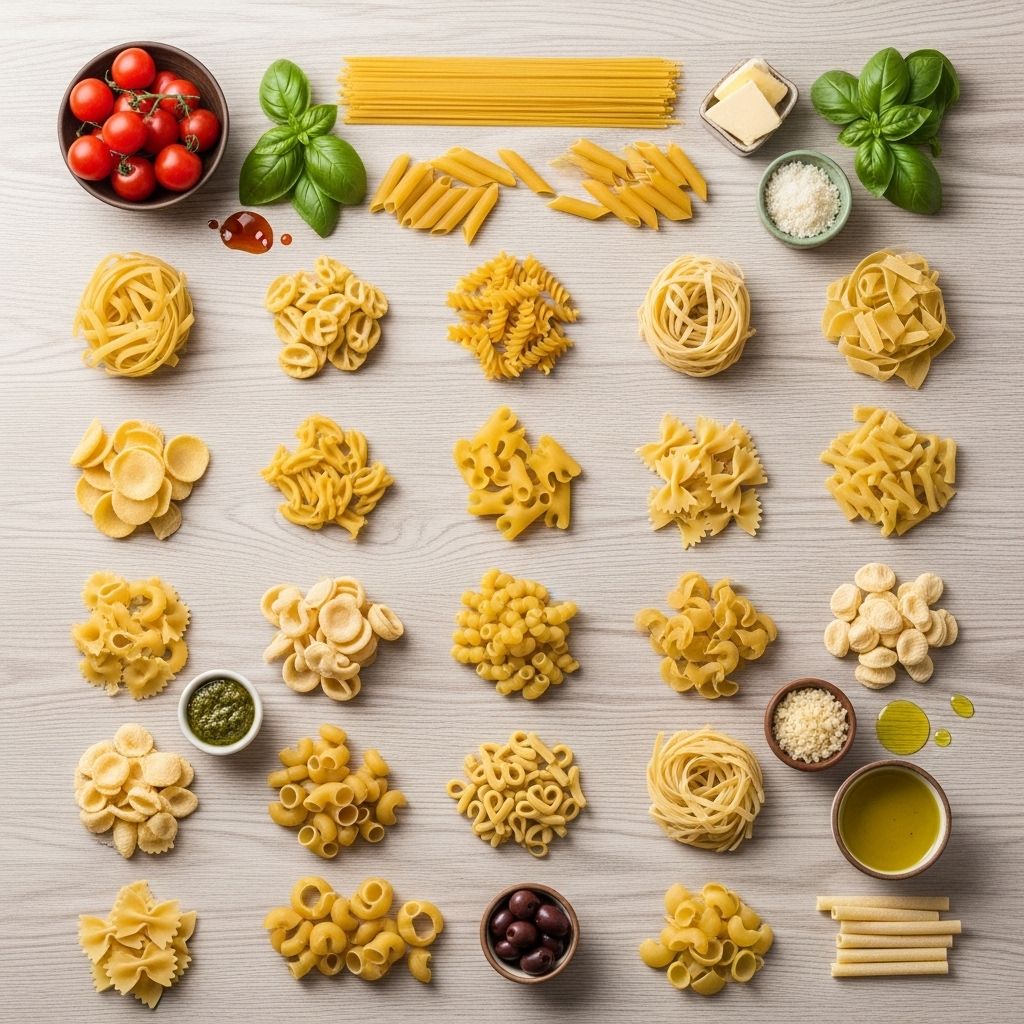
Image: HearthJunction Design Team
27 Types of Pasta and Their Uses
Pasta is a beloved staple in kitchens around the world, prized for its versatility and ability to take on a dazzling array of shapes and textures. From silky ribbons to tiny tubes, each type of pasta has its own best uses and pairing suggestions. This guide explores 27 of the most popular pasta types, offering tips for cooking, pairing, and making the most out of every noodle.
Table of Pasta Types and Their Ideal Uses
| Pasta Type | Shape | Best Uses |
|---|---|---|
| Angel Hair (Capellini) | Very thin, long strands | Light sauces, seafood, simple oils |
| Bow Tie (Farfalle) | Pinched center, winged edges | Pasta salads, creamy sauces, veggies |
| Bucatini | Thick, hollow spaghetti | Hearty sauces, carbonara |
| Ditalini | Short, smooth tubes | Soups, pasta salads, chunky sauces |
| Egg Noodles | Flat, ribbon-like | Soups, casseroles, cream sauces |
| Fettuccine | Long, flat ribbons | Cream sauces, Alfredo, bolognese |
| Fusilli | Short, spiral twists | Thick sauces, pasta salads |
| Gemelli | Twisted twin tubes | Baked dishes, vegetable sauces |
| Gnocchi | Soft, dumpling-like | Rich or tomato sauces, brown butter |
| Linguine | Long, flat, narrow | Seafood, pesto, light sauces |
| Macaroni | Short, curved tubes | Cheese sauces, baked dishes |
| Manicotti | Large, wide tubes | Stuffed and baked |
| Orecchiette | Small, ear-shaped disks | Vegetables, sausage, chunky sauces |
| Pappardelle | Very wide, flat ribbons | Meaty ragùs, mushrooms |
| Penne | Short, diagonally cut tubes | Chunky sauces, baked pasta |
| Radiatore | Short, ridged, radiator-like | Thick sauces, soups |
| Ravioli | Square, filled pillows | Stuffed, with butter or tomato sauces |
| Rigatoni | Large, ridged tubes | Thick sauces, baked pasta |
| Rotini | Short, tight spirals | Pasta salad, tomato sauces |
| Shells (Conchiglie) | Cup-shaped shells | Stuffed, with cheese, baked dishes |
| Spaghetti | Long, round strands | Tomato, oil-based, all-purpose |
| Tagliatelle | Long, ribbon-like | Meaty sauces, ragùs |
| Tortellini | Ring-shaped, filled | Soups, with butter or cream sauces |
| Tortiglioni | Large, grooved tubes | Chunky or baked sauces |
| Vermicelli | Thin, round strands | Light sauces, soups |
| Ziti | Medium tubes, smooth | Baked dishes, hearty sauces |
Understanding Pasta Shapes and Their Best Uses
Each pasta shape isn’t just about aesthetics—it’s designed to work best with certain sauces and ingredients. Here’s a breakdown of some of the most beloved pasta types, how they’re made, and creative ideas for cooking them.
1. Angel Hair Pasta (Capellini)
Angel hair is an ultra-thin, delicate noodle that cooks quickly. Its fine texture makes it best for light sauces, such as olive oil, lemon, or gentle broths, and seafood combinations where you don’t want the pasta to overpower the other flavors.
- Perfect with light tomato sauces or herbed olive oil
- Often used in quick stir-fry noodle dishes
- Ideal when paired with shrimp or scallops
2. Bow Tie Pasta (Farfalle)
Named after the Italian word for “butterflies,” farfalle are pinched in the middle, creating a perfect texture for catching creamy or cheesy sauces. Their whimsical shape also makes them a favorite for pasta salads and baked dishes.
- Great for creamy sauces, pesto, or tomato-based sauces
- Excellent in cold pasta salads with veggies and herbs
- Holds up well in baked pasta casseroles
3. Bucatini Pasta
Bucatini resembles thick spaghetti but with a hole running through the center. The hollow core allows it to hold onto extra sauce, especially in robust dishes like Amatriciana.
- Pairs well with hearty sauces like carbonara or cacio e pepe
- Ideal in classic Roman recipes
- Great for soaking up meaty or tomato-based sauces
4. Ditalini Pasta
Ditalini are small, tube-shaped pasta that lend themselves to soups and stews such as minestrone and pasta e fagioli.
- Excellent for soups and bean stews
- Perfect for pasta salads
- Stands up to chunky vegetable sauces
5. Egg Noodles
Egg noodles are wide ribbons often made with egg-rich dough, giving them a tender and hearty texture. They’re staple in comfort food dishes including casseroles and stroganoff.
- Add heartiness to soups and stews
- Common in casseroles and baked dishes
- Pair well with mushroom or creamy sauces
6. Fettuccine Pasta
Fettuccine are flat, egg-based noodles, wider than linguine. Their sturdy shape makes them ideal for substantial sauces, like Alfredo or bolognese.
- Best for rich cream sauces
- Commonly used in Fettuccine Alfredo
- Can substitute in recipes calling for linguine or spaghetti
7. Fusilli Pasta
Fusilli are thick, spiral-shaped noodles. Their grooves are perfect for holding onto chunky or creamy sauces, making them a favorite for pasta salads and robust dishes.
- Great for thick, creamy, or tomato sauces
- Ideal in pasta salads
- Works with pesto and cheese sauces
8. Gemelli Pasta
Gemelli are short, twisted pasta that resemble small twin spirals. They’re versatile for both hearty sauces and lighter dishes with vegetables and cheese.
- Perfect in baked pasta dishes
- Stands up to meaty, chunky sauces
- Excellent tossed with roasted vegetables
9. Gnocchi
Gnocchi are soft, chewy dumplings, traditionally made from potatoes but also flour or ricotta. They’re boiled and often served with rich or herbaceous sauces.
- Delicious with brown butter and sage
- Works well with tomato, cream, or pesto sauces
- Hearty enough to be a main dish on their own
10. Linguine
Linguine are long, flat noodles, slightly wider than spaghetti, perfect for seafood or light, oil-based sauces.
- Classic in clam sauce (Linguine alle Vongole)
- Pairs well with pesto or lemon garlic sauces
- Ideal with lighter tomato-based sauces
11. Macaroni
Macaroni refers to short, curved tubes—most famous as the base for macaroni and cheese.
- Best for creamy cheese sauces
- Works in baked pasta dishes
- Common in American comfort food favorites
12. Manicotti
Manicotti are large, wide tubes designed for stuffing and baking with rich cheese and meat fillings.
- Perfect for stuffing with ricotta, spinach, or ground meat
- Baked under tomato or béchamel sauce
- Often topped with mozzarella and Parmesan
13. Orecchiette
Orecchiette translates to “little ears.” These small, concave disks catch sauces in their centers, perfect for pairing with chunky vegetable or sausage sauces.
- Commonly paired with broccoli rabe and sausage
- Holds chunky or cheesy sauces well
- Works in both hot and cold dishes
14. Pappardelle
Pappardelle are very wide, flat noodles ideal for thick, meaty ragùs that cling to their broad surfaces.
- Perfect for slow-simmered meat sauces
- Great with wild mushroom sauces
- Excellent in rich, hearty stews
15. Penne
Penne are short tubes cut on the diagonal, known for their ridges that catch sauces well. They’re a favorite for both baked dishes and classic pasta with tomato, meat, or cream sauces.
- Great for vodka sauce, arrabbiata, or pesto
- Holds up in baked casseroles
- Pairs well with chunky vegetable sauces
16. Radiatore
Radiatore are short, ridged pasta shaped like miniature radiators, perfect for trapping thick sauces.
- Great in hearty soups or stews
- Works with chunky, rustic sauces
- Holds creamy or meat sauces well
17. Ravioli
Ravioli are square-shaped pasta pillows, typically stuffed with cheese, meat, or vegetables. They’re boiled and served with delicate or rich sauces.
- Filled with ricotta, spinach, or mushrooms
- Delicious with tomato, butter-sage, or cream sauces
- Often accompanied by light broths
18. Rigatoni
Rigatoni are large, ridged tubes that readily hold thick or chunky sauces, making them a bold choice for baked casseroles.
- Perfect for hearty meat or vegetable sauces
- Great for baked pasta dishes like rigatoni al forno
- Stands up well to robust flavors
19. Rotini
Rotini are short, tight spirals that grab onto sauces, making them ideal for thick, cheesy, or oil-based dressings in both hot and cold pasta salads.
- Excellent in pasta salads
- Works well with chunky tomato or pesto sauces
- Holds up to hearty vegetables
20. Shells (Conchiglie)
Shells, or conchiglie, are cup-shaped, making them ideal for stuffing or for holding rich sauces inside their curves.
- Commonly stuffed with ricotta and spinach, then baked
- Medium and small shells are great for soups
- Hold thick, creamy sauces well
21. Spaghetti
Spaghetti is the world’s best-known pasta shape: long, round, and incredibly versatile.
- Ideal with tomato-based sauces, meatballs, or oil and garlic
- Works with almost any sauce—creamy, pesto, or seafood
- Staple for classic Italian-American dishes
22. Tagliatelle
Tagliatelle are long, ribbon-like strands, slightly narrower than pappardelle. Their broad surface makes them ideal for rich, meaty sauces.
- Perfect for slow-simmered ragù alla Bolognese
- Good with creamy or mushroom sauces
- Common in northern Italian cuisine
23. Tortellini
Tortellini are ring-shaped pasta, traditionally stuffed with cheese, meats, or vegetables and often served in broth or with butter-based sauces.
- Common in soups (tortellini en brodo)
- Delicious with light cream sauces
- Filled with cheese, pork, or prosciutto
24. Tortiglioni
Tortiglioni are large tubes with deep grooves, ideal for capturing chunky sauces and standing up to robust flavors.
- Works with thick, meaty sauces
- Perfect for baked pasta dishes
- Ideal in rustic, hearty recipes
25. Vermicelli
Vermicelli are thin, long noodles, slightly thicker than angel hair. Their delicate texture matches best with light sauces and brothy soups.
- Great in light seafood dishes
- Common in Asian and Mediterranean cuisines
- Quick to cook—be careful not to overdo it!
26. Ziti
Ziti are medium-length, smooth tubes, staple of classic baked pasta dishes.
- Best for baked ziti casseroles
- Perfect for cheesy, hearty tomato sauces
- Popular in Italian-American celebrations
Tips for Cooking and Pairing Pasta
- Always cook pasta in plenty of salted water to enhance its flavor.
- Pair delicate pastas (like angel hair or vermicelli) with light sauces and robust pastas (like rigatoni or pappardelle) with heavier, chunky sauces.
- Reserve some pasta cooking water to help emulsify and thicken sauces.
- Bake sturdy pasta shapes (ziti, rigatoni, shells) for classic comfort food dishes.
- Experiment with stuffed pastas (ravioli, manicotti, tortellini) and complementary sauces like brown butter, tomato, or creamy Alfredo.
Frequently Asked Questions (FAQs)
What is the difference between fresh and dried pasta?
Fresh pasta is made from eggs and flour, resulting in a more delicate and pliable noodle. It’s best for dishes with light sauces or as stuffed pasta. Dried pasta, made from durum wheat, holds its shape better in hearty or baked dishes and can be stored for long periods.
Can I substitute one pasta shape for another?
In most recipes, you can swap similarly sized or textured pastas. For instance, penne can replace rigatoni, or fettuccine can stand in for linguine. For best results, consider the sauce and the role of the pasta in the dish.
How much pasta should I cook per person?
Generally, plan on about 2 ounces (56 grams) of dried pasta per person for a main course. For soups or side dishes, use a little less.
What’s the right way to cook pasta?
Bring a large pot of salted water to a boil, add pasta, and cook until al dente (tender but still with a slight bite), stirring occasionally. For stuffed or delicate pasta, test a minute or two before the package suggests.
Which pasta shapes are best for baked dishes?
Sturdy shapes like ziti, rigatoni, manicotti, shells, and penne perform best in baked recipes as they hold up well under heat and with heavier sauces.
Explore More Pasta Recipes
Looking to try your favorite pasta shape in a new recipe? Discover creative ideas and classic favorites to bring fresh flavors to your table:
- Classic Spaghetti Carbonara
- Baked Ziti with Sausage and Ricotta
- Linguine with Clam Sauce
- Fettuccine Alfredo
- Cheesy Baked Macaroni
- Vegetarian Stuffed Shells
- Chicken Broccoli Pasta Salad
With so many shapes, sauces, and pairings to choose from, there’s a pasta for every palate and occasion. Experiment with different types to discover your family’s favorites and make every meal memorable!
References
Read full bio of Shinta

